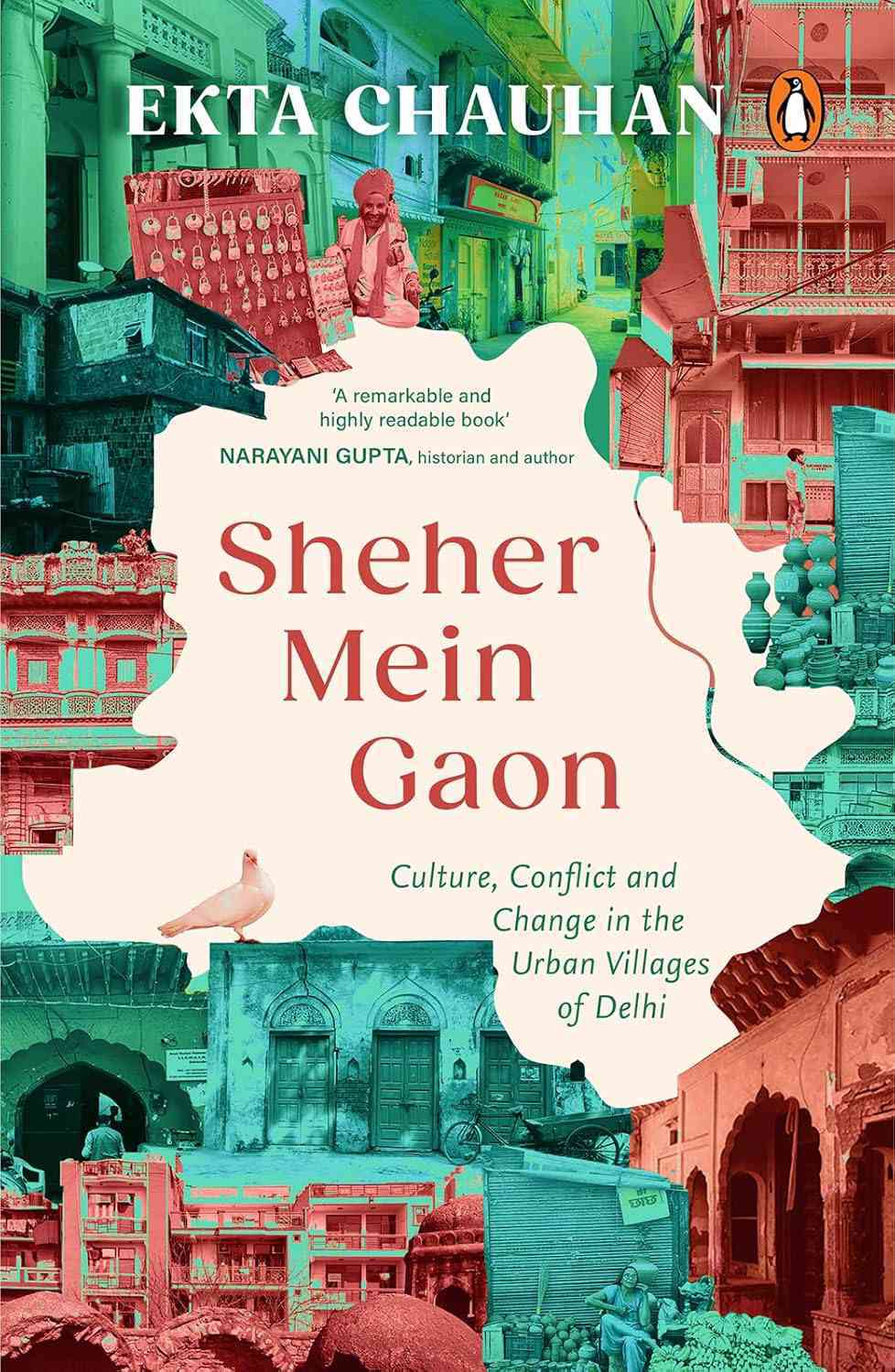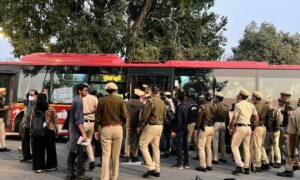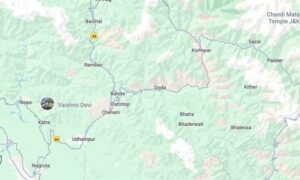
If you’re at all interested in the history of Delhi, chances are you have heard of the “seven cities of Delhi”. Of how some of the most ambitious rulers sought to assert their claim to the throne by building massive citadels and cities of their own. From Lal Kot to Tughlaqabad, Firozabad to Shahjahanabad and New Delhi, these “cities” (not all historians agree on their number – there were very likely more than seven Delhis) have been discussed and described time and again. Their establishment, their layout, their evolution, their socio-cultural and economic make-up have been studied by numerous scholars.
The concept of a city
What of Delhi’s villages, though? The villages of Delhi rarely find anything beyond a fleeting mention in the city’s chronicles, whether factual or fictitious. They are tucked away, hidden behind the towering facades of palaces and skyscrapers, grand monuments and sweeping flyovers. Yet – as Ekta Chauhan writes in her book Sheher Mein Gaon: Culture, Conflict and Change in the Urban Villages of Delhi – perhaps to understand Delhi’s villages, we need to first re-examine our concept of a city. Chauhan quotes historian Sohail Hashmi as saying that “there are no cities without migration”. Chauhan goes on to add: “He elaborated that a place only begins to transform into a city when diverse groups arrive – bringing with them new trades, skills, stories and ways of life. Until then, it remains a village: self-contained and unlayered. Migration is what makes a city…”
Of course, with migration, with the growth of a village into a city (or part of a city), there comes flux. There is change, there is conflict, there is disagreement between what was, what is, and what may be. This – the past, the present, and the possible future – of Delhi’s villages is what Chauhan sets out to examine in this slim but important book, which looks at nine villages spread across Delhi.
After an introduction, the author plunges straightaway into the first of the villages, Begumpur. This is followed by some of Delhi’s best-known “urban villages”: Shahpur Jat, Hauz Khas and Khirki, before the book moves on to some of the lesser-known gaons: Kalu Sarai, Deoli, Mitraon, Sungarpur, and finally Sonipat. Chauhan devotes a chapter to each village and ends with an epilogue, “Khirki Kay Paar: Beyond the Rural-Urban Dichotomy.”
There is no set pattern to the chapters, to Chauhan’s exploration of these villages and their residents, both permanent as well as temporary. Each chapter, instead, flows organically, examining as it goes the history of the village, how it has evolved, who its inhabitants are, how they earned a living (and what they do now, in the absence of fields or other “rural” means of livelihood). Who are the newcomers, the migrants who have made that particular village their home for the time being.
For each village, Chauhan weaves together facts, opinions, and observations, ranging from insights about pressures on land to ill-advised government policies, from the stress on migrant kaarigars in Shahpur Jat to the stark division between university campuses and gated communities on the one hand, village fields on the other, in Sonipat. There are conversations with people: with villagers as well as migrants. There are glimpses – at times heartbreaking, at times frustrating – into the lives of these rural communities, stranded in the middle of one of Asia’s largest metropolitan sprawls.
One of the many remarkable things about Sheher Mein Gaon is the way Ekta Chauhan has chosen the villages she highlights. She mentions in the course of the book that Delhi has close to 350 villages; surely among those many, there would be several that would mirror the same problems as she highlights through the stories of Begumpur, Khirki, Shahpur Jat, et al. But Chauhan chooses her focus carefully, with each of the villages distinct in its own way. If Shahpur Jat is synonymous with fashion and Hauz Khas (its chapter aptly titled “Chasing the ‘Cool’”) with the hip crowd, there’s Mitraon (“Ya Toh Gangster, Ya Toh Khiladi”), the hair-raising description of which reads like a blood-soaked Bollywood film of gang warfare. There’s Sungarpur, still with its fields, still seemingly embodying the idyllic rural charm of urban imagination. There’s Begumpur, its mosque increasingly a focal point of communal tensions.
Anger and resilience
Chauhan’s writing is very readable. The credibility is there in the facts, the (obviously solid) research that backs them up. Chauhan’s background – with degrees in history, public policy, and World Heritage Studies – means that she brings to this book a solid grounding in several pertinent disciplines, helping her to analyse and articulate the many tangled issues that surround Delhi’s villages. This scholarliness is balanced perfectly with the human element: the exact words (written in the Roman script, followed by a translation) of the people of these villages. Both those whose families have lived in these villages for many generations, as well as those who have just arrived.
The voices in this book run the gamut from Afghan refugees in Khirki to students preparing for the UPSC in Kalu Sarai; from Bina Ramani and her memoir of Hauz Khas Village, to a farmer in Sungarpur. There are stories of anger and intolerance, but there are also instances of hope and resilience, for instance, in the establishment of organisations like Dilli Dehat and the Simurgh Centre. If there is a lack, it is in the voices of women; there are too few of these, but it is something Chauhan herself admits and hopes to rectify in future projects.
At the beginning of Sheher Mein Gaon, Chauhan (who is an assistant professor at OP Jindal Global University) describes her growing-up years: she was born and brought up in Khirki Village. That – the duality in her own life – is possibly what helps Chauhan see both sides of the coin. The result is an empathetic yet objective view of Delhi’s villages. This book is an eye-opener, a reminder of why the sheher needs to keep its gaons in mind as it grows and progresses.
Madhulika Liddle’s latest novel For The Love of Apricots was published earlier this year by Speaking Tiger Books.

Sheher Mein Gaon: Culture, Conflict and Change in the Urban Villages of Delhi, Ekta Chauhan, Penguin India.
📰 Crime Today News is proudly sponsored by DRYFRUIT & CO – A Brand by eFabby Global LLC
Design & Developed by Yes Mom Hosting






